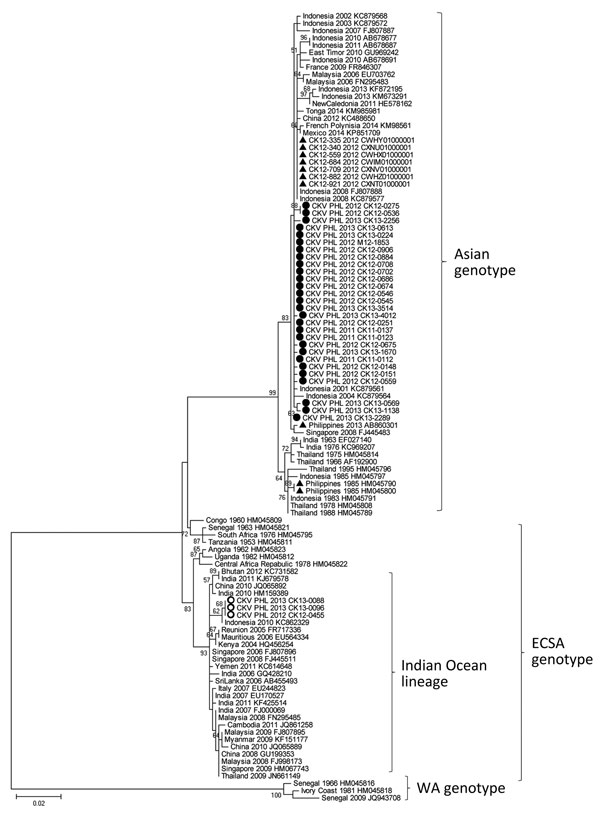Volume 22, Number 5—May 2016
Dispatch
Molecular Characterization of Chikungunya Virus, Philippines, 2011–2013
Figure 1

Figure 1. Phylogenetic analysis of partial (733 nt) E1 gene of 31 CHIKVs detected in the Philippines in this study during 2011–2013 compared with 77 global strains. The tree was constructed using maximum-likelihood method with the Kimura 2-parameter model and 1,000 bootstrap replications. Bootstrap values >50% are indicated on the branches of the tree. Black circles indicate Asian genotypes; open circles indicate ECSA genotypes analyzed in this study; triangles indicate reference strains collected in the Philippines. CHIKV, chikungunya virus; ECSA, East/Central/South African, WA, West African. Scale bar indicates nucleotide substitutions per site.
1These authors contributed equally to this article.
Page created: April 13, 2016
Page updated: April 13, 2016
Page reviewed: April 13, 2016
The conclusions, findings, and opinions expressed by authors contributing to this journal do not necessarily reflect the official position of the U.S. Department of Health and Human Services, the Public Health Service, the Centers for Disease Control and Prevention, or the authors' affiliated institutions. Use of trade names is for identification only and does not imply endorsement by any of the groups named above.